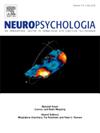Somatosensory influence on auditory cortical response of self-generated sound
IF 2
3区 心理学
Q3 BEHAVIORAL SCIENCES
引用次数: 0
Abstract
Motor execution which results in the generation of sounds attenuates the cortical response to these self-generated sounds. This attenuation has been explained as a result of motor relevant processing. The current study shows that corresponding somatosensory inputs can also change the auditory processing of a self-generated sound. We recorded auditory event-related potentials (ERP) in response to self-generated sounds and assessed how the amount of auditory attenuation changed according to the somatosensory inputs. The sound stimuli were generated by a finger movement that pressed on a virtual object, which was produced by a haptic robotic device. Somatosensory inputs were modulated by changing the stiffness of this virtual object (low and high) in an unpredictable manner. For comparison purposes, we carried out the same test with a computer keyboard, which is conventionally used to induce the auditory attenuation of self-generated sound. While N1 and P2 attenuations were clearly induced in the control condition with the keyboard as has been observed in previous studies, when using the robotic device the amplitude of N1 was found to vary according to the stiffness of the virtual object. The amplitude of N1 in the low stiffness condition was similar to that found using the keyboard for the same condition but not in the high stiffness condition. In addition, P2 attenuation did not differ between stiffness conditions. The waveforms of auditory ERP after 200 ms also differed according to the stiffness conditions. The estimated source of N1 attenuation was located in the right parietal area. These results suggest that somatosensory inputs during movement can modify the auditory processing of self-generated sound. The auditory processing of self-generated sound may represent self-referenced processing like an embodied process or an action-perception mechanism.
体感对自生声音听觉皮层反应的影响。
产生声音的运动执行会减弱大脑皮层对这些自发声音的反应。这种衰减被解释为运动相关处理的结果。目前的研究表明,相应的体感输入也会改变对自发声音的听觉处理。我们记录了自发声音的听觉事件相关电位(ERP),并评估了听觉衰减量是如何随体感输入而变化的。声音刺激由手指按压虚拟物体的动作产生,虚拟物体由触觉机器人装置产生。通过以不可预测的方式改变虚拟物体的硬度(低度和高度)来调节体感输入。为了进行比较,我们用电脑键盘进行了同样的测试,电脑键盘通常用于诱导自发声音的听觉衰减。在使用键盘的对照条件下,N1 和 P2 衰减明显,这在以前的研究中已经观察到,而在使用机器人设备时,N1 的振幅则随虚拟物体的硬度而变化。在低硬度条件下,N1 的振幅与在相同条件下使用键盘时的振幅相似,但在高硬度条件下则不同。此外,不同硬度条件下的 P2 衰减也没有差异。200 毫秒后的听觉 ERP 波形也因僵硬度条件而异。估计的 N1 衰减源位于右顶叶区。这些结果表明,运动过程中的躯体感觉输入可以改变自发声的听觉处理。自发声音的听觉处理可能代表了一种自我参照处理,就像一种体现过程或行动感知机制。
本文章由计算机程序翻译,如有差异,请以英文原文为准。
求助全文
约1分钟内获得全文
求助全文
来源期刊

Neuropsychologia
医学-行为科学
CiteScore
5.10
自引率
3.80%
发文量
228
审稿时长
4 months
期刊介绍:
Neuropsychologia is an international interdisciplinary journal devoted to experimental and theoretical contributions that advance understanding of human cognition and behavior from a neuroscience perspective. The journal will consider for publication studies that link brain function with cognitive processes, including attention and awareness, action and motor control, executive functions and cognitive control, memory, language, and emotion and social cognition.
 求助内容:
求助内容: 应助结果提醒方式:
应助结果提醒方式:


